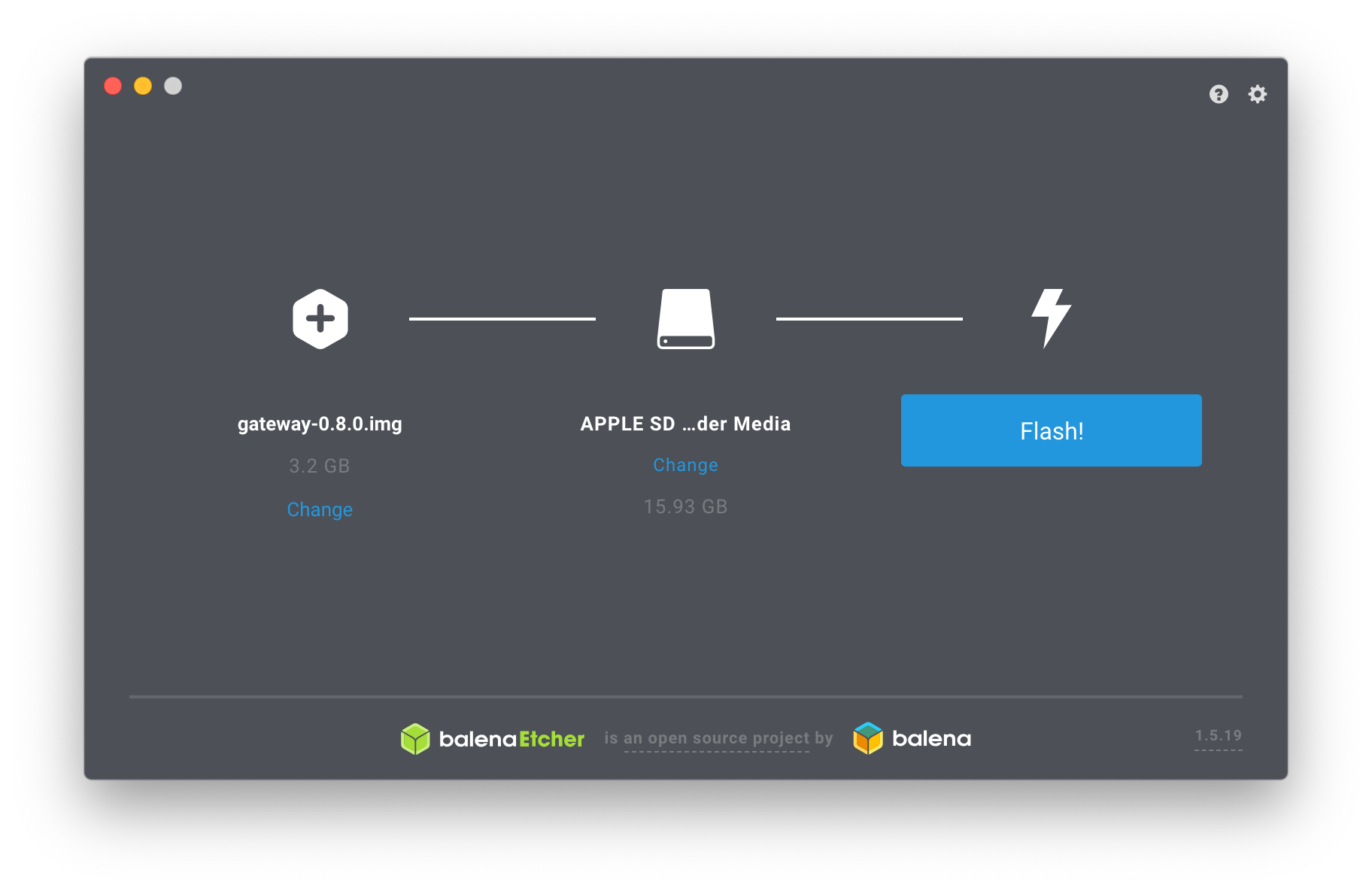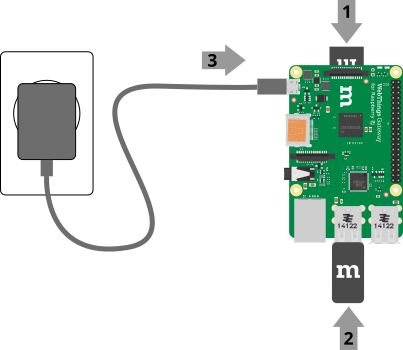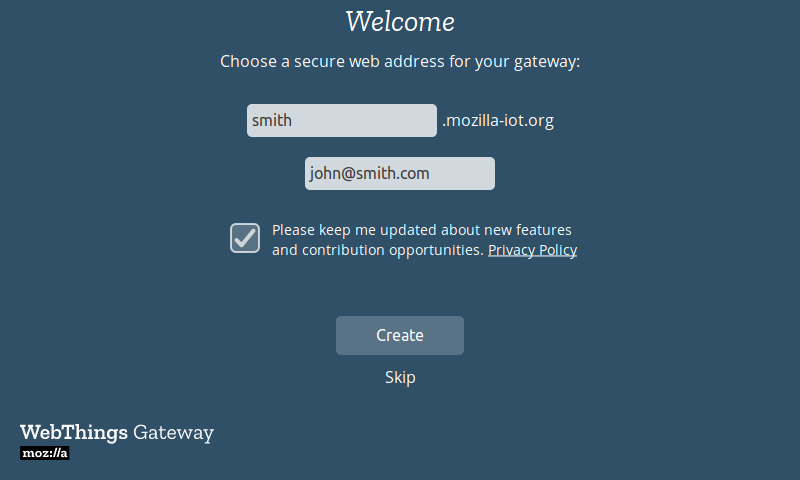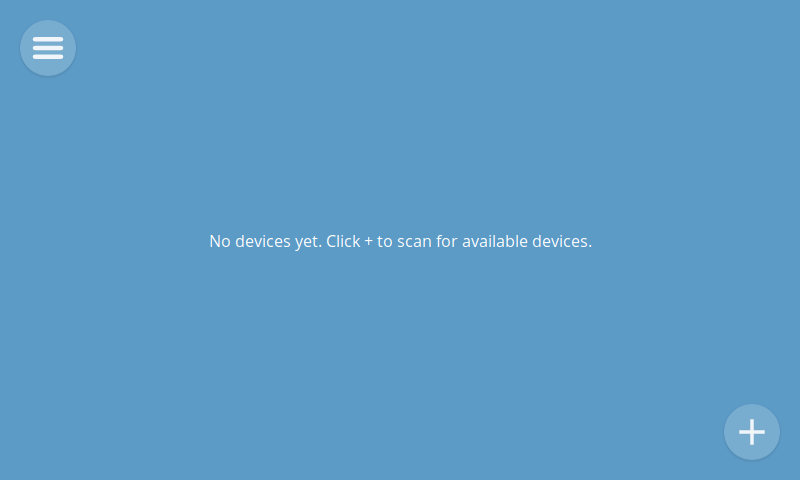Mozilla WebThings on Raspberry Pi - Getting Started

from translator
Mozilla made a universal hub for smart home devices to connect devices from different vendors and protocols (including Zigbee and Z-Wave) together, and manage them without using clouds and from one place. A year ago there was news about the first version, and today I post a translation of the recently updated documentation that answers most of the basic questions about the project. I look forward to discussion and exchange of views in the comments.
Gateway WebThings for Raspberry Pi
Mozilla's WebThings Gateway is software for gateways used in smart home systems that will allow you to directly monitor and control smart devices over the Internet without intermediaries.
What you need
- Computer Raspberry Pi and power supply (for Raspberry Pi 3 requires at least 2A)
- microSD card (at least 8 GB, class 10)
- USB adapter (see the list of compatible adapters )
Note: Raspberry Pi 3 comes with Wi-Fi and Bluetooth. A USB adapter is required to connect devices using protocols like Zigbee and Z-Wave.
1. Download the image
Download the image from the Mozilla IoT website.
2. Sew the image
Sew the image onto the microSD card. There are different ways to record. We recommend using Etcher .

- Open Etcher
- Insert the memory card into the adapter of your computer.
- Choose image as source
- Choose a memory card
- Click “Flash!”
Upon completion, remove the memory card.
3. Booting the Raspberry Pi

- Insert the memory card into the Raspberry PI
- Connect USB adapters if available
- Connect power to start the download.
Note: The first download of the Raspberry Pi can take 2-3 minutes.
4. Connecting via Wi-Fi
After downloading, the gateway will create the “ WebThings Gateway XXXX ” access point (where XXXX is four digits from the Raspberry Pi MAC address). Connect to this point from your computer or smartphone.

Once connected, you should see the welcome screen of the WebThings gateway, which will then start searching for your home Wi-Fi network.

Select your home network from the list and enter the password to connect.
Note:
- If you have connected to the “WebThings Gateway XXXX” access point but cannot see the welcome screen, try opening the page at 192.168.2.1 .
- Raspberry Pi can also be connected to the network using an Ethernet cable. In this case, it will try to get the network’s IP address from your router automatically. Then type “http: //gateway.local” in the browser to configure the gateway for the first time.
- If you move the gateway to another location or it loses access to the original network, it will automatically switch to the access point mode so that you can connect to it and configure another network.
5. The choice of subdomain
After connecting the gateway to the network, make sure that your computer or smartphone from which you are configuring is on the same network. After that, go to the gateway.local address in the browser.
After that, you will have the option to register a free subdomain to access the gateway outside the local network via a secure Mozilla tunnel .

Enter the desired subdomain and email address (to reset the password in the future), and click “Create”.
Note:
- You can skip this step and use the gateway completely locally or by configuring port forwarding and DNS yourself. However, in this case, if in the future you still decide to use the Mozilla subdomain, the gateway settings will have to be completely reset.
- If the page at gateway.local does not open, try to find out the IP address of the gateway through your router (look in the list of connected devices like “gateway” or with a MAC address starting with “b8: 27: eb”) and try to open the page straight over IP.
- If gateway.local and http: // do not work, make sure that both your computer and Raspbeery Pi are connected to the same network.
- If you have already registered a subdomain before, enter its name and the email address you used to register it. The instructions for accessing will appear on the screen.
6. Creating an account
After registering the subdomain, a page will open with the following gateway configuration steps. Enter your name, email address and password, and click “Next”.

Note: Additional accounts can be created later.
Done!
After this, the “Things” page should open to connect smart devices to the gateway.

See the WebThings Gateway User Guide for further configuration.
')
Source: https://habr.com/ru/post/448652/
All Articles